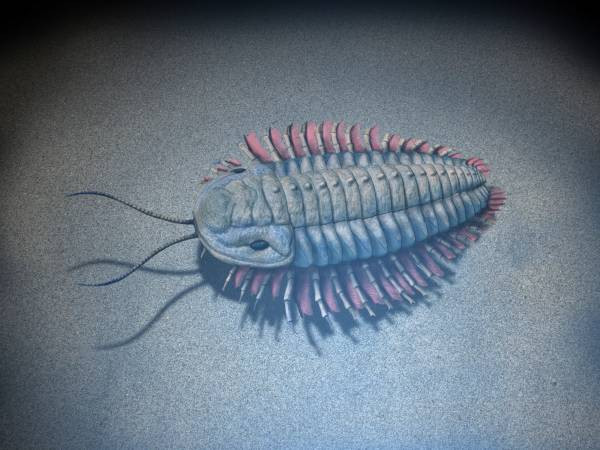Skeletons came to life in chalky oceans half a billion years ago
Trilobites and shellfish were among the first to evolve a hard skeleton.

A wide and unrelated range of creatures began to grow skeletons around the world at almost the same time because of a fundamental shift in ocean chemistry 550 million years ago.
These creatures grew skeletons when ocean chemistry reached a tipping point that meant that calcium carbonate was formed instead of the magnesium-based mineral dolomite, finds a paper published in the journal Proceedings of the Royal Society B.
Dolomite has never been used by a living organism to make a skeleton, as its crystals are slow growing in a very regular pattern. Calcium carbonate – or chalk – forms very quickly in a less precise structure. A shift from magnesium-dominated chemistry to chalky water meant calcium carbonate precipitated out onto these organisms.
"We know that these large skeletal fossils appear within about 5 million years," study author Rachel Wood of the University of Edinburgh in the UK told IBTimes UK.
Diversity of first skeletons
The creatures that grew the first skeletons ranged from tiny one-celled organisms to trilobites, with their tough exoskeleton. For many of the organisms with the first skeletons, it's hard to tell whether they were internal skeletons like humans or hard exoskeletons like most insects'.
This diversity of marine organisms each developing the same physical change at the same time was one clue suggesting that it was a change in their environment leading to the origin of skeletons.
"The skeletons were acquired independently in unrelated forms. We've got what are probably animals, we've got a unicellular sac-like organisms, and we've got a skeletal holdfast [a type of root-like structure some sea creatures have]."
Another clue was that for the first creatures with skeletons in the fossil record, there are also counterparts preserved that did not have a skeleton.
Toughening up
"These skeletal forms all appeared to have a soft-bodied twin," Wood said. These are found in shales or siltstones, whereas their skeletal counterparts are found in limestone, made up of calcium carbonate.
"We know that when these rocks were forming, the seawater chemistry would have been different," she said.
As chalk began to precipitate out of the oceans readily, it gathered on the organic, carbon-based hard body parts of the organisms. These were pre-existing 'organic skeletons' – like a bath sponge, made of up of collagen - a tough protein found in human bones - or chitin. In the right environment these forms were able to form the basis for a skeleton, said Wood.
Exactly what triggered the shift in ocean chemistry isn't yet clear. It could have been a shift in the amount of oxygen available or simply shifting the ratio of magnesium-carbon in the sea water, she said.
© Copyright IBTimes 2025. All rights reserved.






















